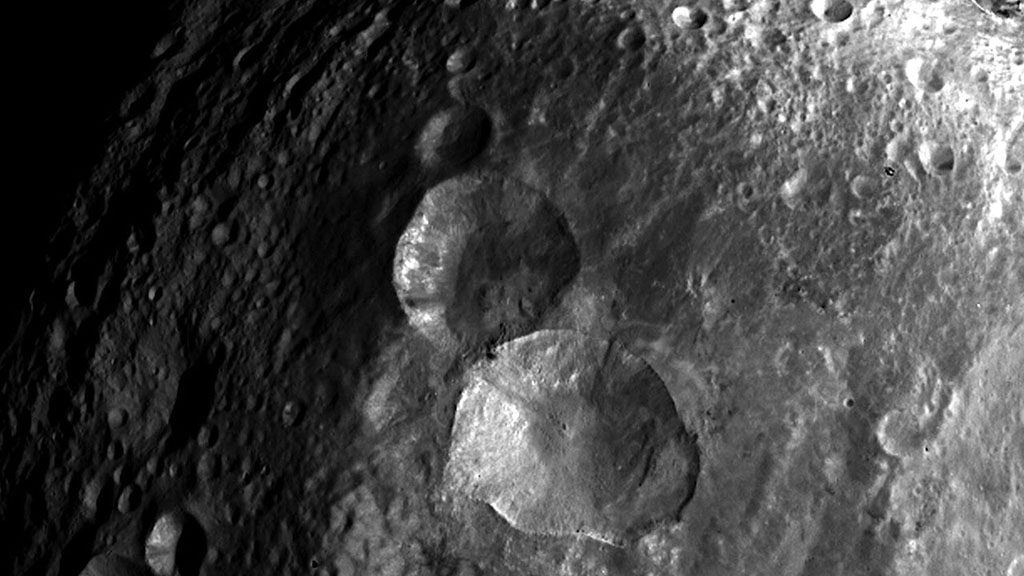Planets and Moons
ID: 10979

Even though Vesta is only the size of Arizona, the asteroid may be a planet. New measurements taken by NASA's Dawn spacecraft, which arrived at Vesta in July 2011 and has orbited as close as 130 miles from the surface, show that beneath complex layers of rock lies a solid metal core. This distinct characteristic makes a strong case for Vesta's reclassification, as the separation of geologic material into crust, mantle and core layers is universal among the terrestrial planets in our solar system. Scientists argue Vesta could have grown to be a full-size planet, but the gravity of its massive neighbor Jupiter disrupted the process. The video below explores Vesta's landscape, history and prospects of being named a planet.




The Smallest Planet?





For More Information
Story Credits
Lead Scientist:
Chris Russell
Lead Writers:
Tony Phillips (Wyle Information Systems)
Dauna Coulter (Media Fusion)
Chris Russell
Lead Writers:
Tony Phillips (Wyle Information Systems)
Dauna Coulter (Media Fusion)
Please give credit for this item to:
Science@NASA and NASA's Goddard Space Flight Center
"Snowman" crater image courtesy of NASA/JPL-Caltech/UCLA/MPS/DLR/IDA
Virtual landscape image courtesy of NASA/JPL-Caltech/UCLA/MPS/DLR/IDA/PSI
False-color map courtesy of NASA/JPL-Caltech/UCLA/MPS/DLR/IDA
Vesta size comparison image courtesy of NASA/JPL-Caltech/UCLA
Science@NASA and NASA's Goddard Space Flight Center
"Snowman" crater image courtesy of NASA/JPL-Caltech/UCLA/MPS/DLR/IDA
Virtual landscape image courtesy of NASA/JPL-Caltech/UCLA/MPS/DLR/IDA/PSI
False-color map courtesy of NASA/JPL-Caltech/UCLA/MPS/DLR/IDA
Vesta size comparison image courtesy of NASA/JPL-Caltech/UCLA
Short URL to share this page:
https://svs.gsfc.nasa.gov/10979
Keywords:
SVS >> App
NASA Science >> Planets and Moons
https://svs.gsfc.nasa.gov/10979
Keywords:
SVS >> App
NASA Science >> Planets and Moons







